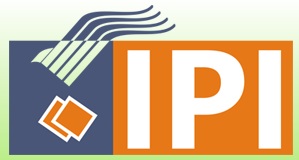Klasterisasi UMKM Pasca Vaksinasi Covid 19
Abstract
Using clustering to develop the UMKM economy, emphasizes cooperation between the elements that are incorporated in it. The core business unit acts as a cluster carriage. Geographical concentration between UMKM that are interrelated to cooperate, involving suppliers of goods, service providers and business actors. Developing the economy by managing UMKM after the Covid 19 vaccination and being able to provide solutions. Determine information on the location of potential development of UMKM, see potential and consumer demographics. Clustering can show the potential of the region, the profile of UMKM, and see regional developments and regional potentials as well as suitable businesses to be developed. The test results above show that the data clustering process for UMKM in Lhokseumawe City is 4 with cluster income, namely good, sufficient, and less, less than optimal based on testing on the elbow method with SSE (sum of square error). The number of clusters used is 4 clusters by determining the starting point at random. The results obtained from grouping into 4 clusters are cluster_0 which has 20 items members, cluster_1 has 3 items of data, cluster_2 has 1 items of data, and cluster_3 has 6 items of data. The total of all data is 30 items, the data has been reduced to 30 sample data.
Full Text:
PDF (Bahasa Indonesia)References
Aditya, K. B, Diyah & Setiawan, Y. (2017). Sistem Informasi Geografis Pemetaan Faktor-Faktor Yang Mempengaruhi Angka Kematian Ibu (Aki) Dan Angka Kematian Bayi (Akb) Dengan Metode K-Means Clustering: Studi Kasus Provinsi Bengkulu. Jurnal Teknik Informatika. 10(1): 59-66
Apriyanti, N. R, Nugroho, R. A & Soesanto, O. (2015). Algoritma K-Means Clustering Dalam Pengolahan Citra Digital Landsat. JurnaL Ilmu Komputer (KLIK). 2(2): 1-13
Dhuhita, W. M. P. (2015). Clustering Menggunakan Metode K-Means Untuk Menentukan Status Gizi Balita. Jurnal Informatika 15(2): 160-174
Rouza. E , Basorudin, & Efrida. (2021). Identifikasi Dan Klasifikasi UMKM Di Kabupaten Rokan Hulu Menggunakan Metode K-Means. Riau Journal of Computer Science. 7(1): 32-40
Supriyanto, A. Basukianto & Rozaq, J. A. (2017). Klasterisasi UMKM dan Potensi Wilayah Berbasis Peta Sebagai Strategi Pengembangan Ekonomi Daerah. Jurnal Pekommas. 2(2): 143-150
DOI: https://doi.org/10.29103/techsi.v13i2.6653
 Article Metrics
Article Metrics
 Abstract Views : 257 times
Abstract Views : 257 times
Refbacks
- There are currently no refbacks.
TECHSI Journalindexed by:
TECHSI Journalis a member of:
© Copyright of Journal TECHSI, (e-ISSN:2614-6029, p-ISSN:2302-4836).














